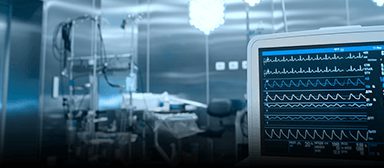
This Compliance Today post is a follow up to last week’s post on IEC 60601-1 Edition 3.1.
- Are there safety benefits to the 3rd edition of IEC 60601-1-2 compared to the 2nd?
The test levels required by both the 2nd and 3rd editions of IEC 60601-1-2 are the same. The main change was in clause 4, where 3rd edition implements a risk management process.
So while the test levels are the same, the objective of the testing and what is being monitored may be different in a 2nd and 3rd edition test report. If it can be shown that the 2nd edition testing covered all aspects of basic safety and essential performance identified in the 3rd edition risk management file, then the 2nd edition report can be used to show compliance with the 3rd edition requirements on that basis.
- What does the term “Essential Performance” mean?
Essential Performance is most easily understood by considering whether its absence or degradation would result in an unacceptable risk.
As an example, a patient hoist has 2 performance functions: Raising the patient and lowering the patient. Through risk analysis it would demonstrate that not being able to lift the patient is an acceptable risk, but not being able to lower the patient is an unacceptable risk. So, only lowering the patient is considered Essential Performance
- For devices approved previously with 60601-1, do we have to test for Rev. 3 in the U.S. for FDA and in other places like Europe?
In the U.S., devices approved prior to the transition dates are grandfathered in and do not require further testing to the updated requirements unless they are changed in a way which requires a follow up submission to the FDA.
In Europe, devices placed on the market after the transition dates must meet the new requirements. Currently the 3rd edition of EN 60601-1-2 applies in the EU. After December 31, 2018, EN 60601-1-2 4th edition will be required.
- Is the EU accepting the 4th edition now?
The EU has not explicitly harmonized the 4th edition yet, however it should be possible to justify the use of the 4th edition to a Notified Body reviewer.
- What if your device is meant to generate and receive signals that violate EMC limits?
Radios contained within the device must meet the applicable radio requirements. Intentional emitters that are not radios are covered by CISPR 11 Group 2.
- Are there any examples available of typical EMC test plans?
Annex G contains detailed guidance and an itemized list of what should be in an EMC test plan.
- Given the FDA’s Guidance on Wireless, and now this 4th edition update for RF Immunity, is it expected that this will address those FDA requirements?
There is currently no plan to replace FDA wireless requirements with the 4th edition proximity RF testing, however this opinion may change over time as the intent and scope of the two requirements are similar.
Searching for an independent test lab for the quick and hassle-free testing and certification of your medical electrical equipment? Look no further! MET Labs is the U.S.’s first Nationally Recognized Testing Laboratory, and is the responsive alternative for EMC and product safety certification. Contact us for a free quotation today.



